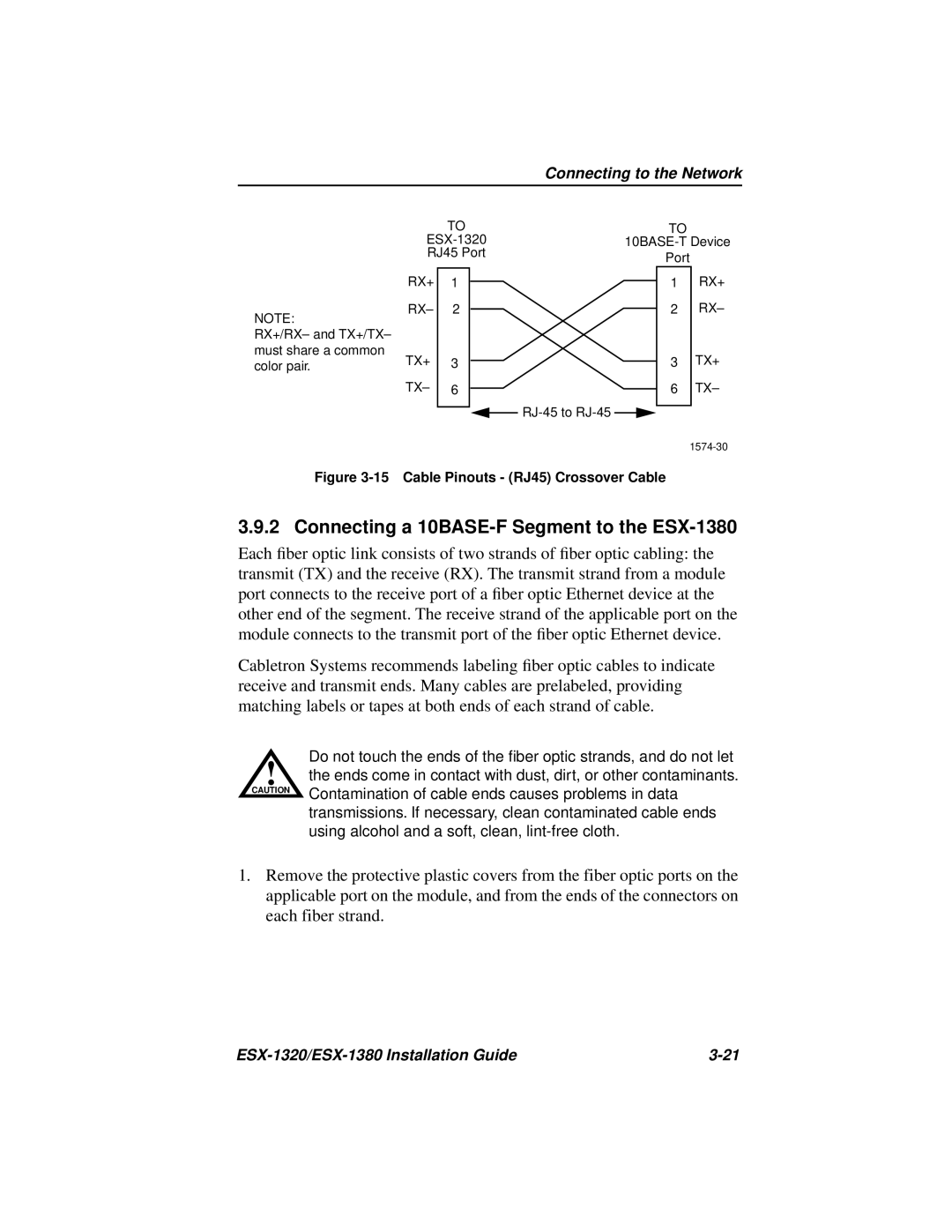
Connecting to the Network
NOTE:
RX+/RX– and TX+/TX– must share a common color pair.
| TO |
|
|
|
| TO |
|
| |
|
| ||||||||
RJ45 Port |
|
|
|
| Port | ||||
|
|
|
|
|
|
| |||
RX+ | 1 |
|
|
|
|
| 1 |
| RX+ |
RX– | 2 |
|
|
|
|
| 2 |
| RX– |
TX+ | 3 |
|
|
|
|
| 3 |
| TX+ |
TX– | 6 |
|
|
|
|
| 6 |
| TX– |
|
|
|
|
|
|
|
|
| |
|
|
|
| ||||||
|
|
|
|
|
| ||||
|
|
|
|
|
|
|
| ||
Figure 3-15 Cable Pinouts - (RJ45) Crossover Cable
3.9.2 Connecting a 10BASE-F Segment to the ESX-1380
Each fiber optic link consists of two strands of fiber optic cabling: the transmit (TX) and the receive (RX). The transmit strand from a module port connects to the receive port of a fiber optic Ethernet device at the other end of the segment. The receive strand of the applicable port on the module connects to the transmit port of the fiber optic Ethernet device.
Cabletron Systems recommends labeling fiber optic cables to indicate receive and transmit ends. Many cables are prelabeled, providing matching labels or tapes at both ends of each strand of cable.
Do not touch the ends of the fiber optic strands, and do not let
!the ends come in contact with dust, dirt, or other contaminants.
CAUTION | Contamination of cable ends causes problems in data |
| |
| transmissions. If necessary, clean contaminated cable ends |
| using alcohol and a soft, clean, |
1.Remove the protective plastic covers from the fiber optic ports on the applicable port on the module, and from the ends of the connectors on each fiber strand.
|
